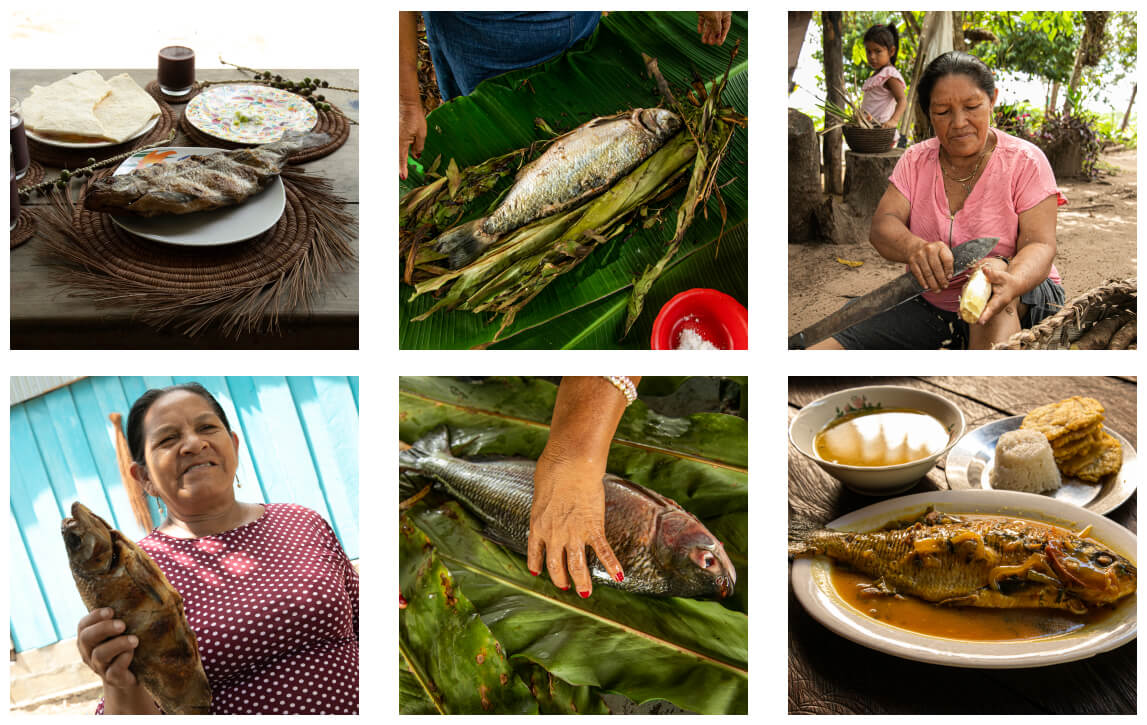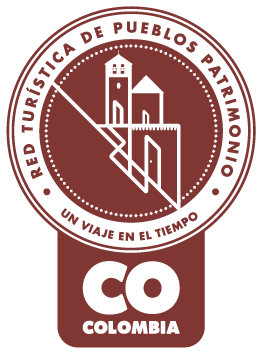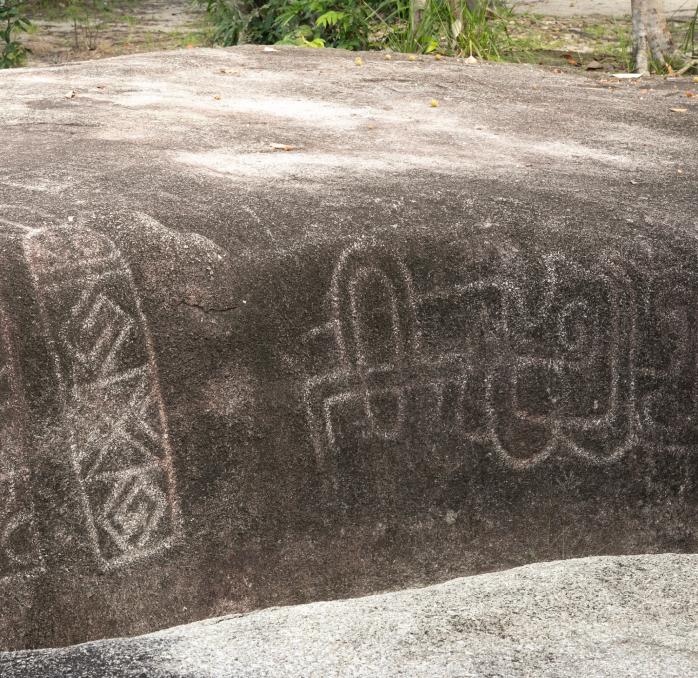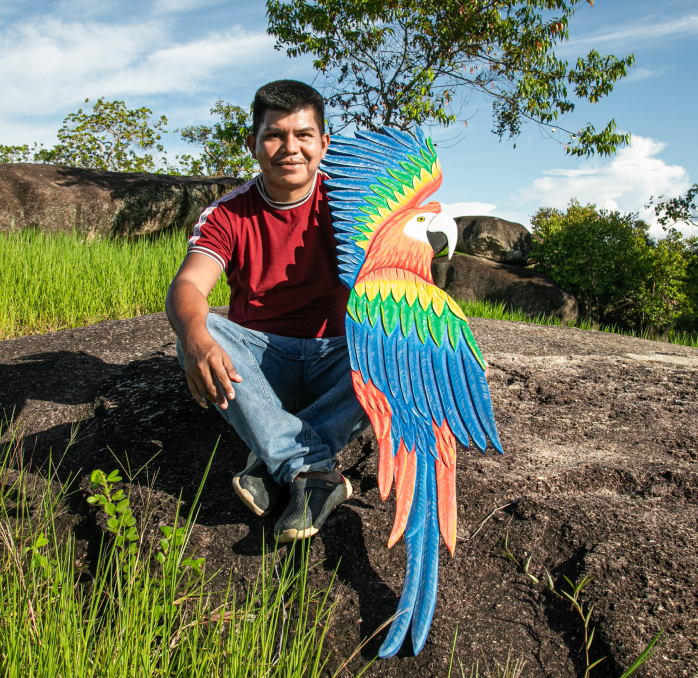Guainía Route
Discovering the Colombian Orinoquía region, that’s what this incredible route is about. Venturing into an aquatic world where the life of communities, primarily indigenous, unfolds along the Inírida, Guaviare, Orinoco, and Atabapo rivers. Arriving in this jungle, suspended from the air, witnessing the convergence of these differently colored rivers and experiencing the vastness of the territory. Perhaps that’s why the department is named Guainía, which means Land of many waters; there’s a reverence for beauty, beginning with one of its foundational myths where Princess Inírida, upon her death, left her tears sown in the savannah in a massive flower with hard and magnificent petals.
This paradise boasts natural attractions like the Mavicure Hills, a rocky formation of three monoliths towering 250 meters high – the Pajarito, the Mono, and Mavicure – which are part of the Guayanés Shield, one of Earth’s oldest geological structures. Additionally, many visit this destination to explore the Fluvial Star of Inírida, where the Orinoco, Guaviare, and Atabapo rivers converge—a Ramsar site, a wetland of universal importance due to its water diversity, the myriad animal and plant species, and the numerous ethnic communities, including the Curripako, Piapoco, and Cubeo, whom we aim to introduce to you through the master artisans we suggest visiting. The indigenous people of this region possess a culinary culture based on mañoco and casabe, derived from the bitter yucca, a poisonous tuber that, through intricate basketry and pottery work, is transformed into sustenance.
For years, these skills remained confined to utilitarian purposes. However, more recently, particularly propelled by women in these communities, craftsmanship has become not only a source of income but an opportunity to showcase their talent in woodworking, clay crafting, and fibers from the moriche and chiquichiqui palms indigenous to the region. This will be your chance to witness firsthand how ancestral crafts coexist, now featured in high-level parades and collections.
Embark on a journey full of history

Artisans along the way
Artisans along the way
We recommended this tour
Schedule the visit in advance with the artisans
Carry cash
Preferably go with the tour operator
4 days
Motorcycle, Taxi

INÍRIDA
Careful planning is crucial due to limited air travel options to this destination. We strongly recommend traveling with an operator well-versed in the region, as moving exclusively by rivers means travel costs are better managed by those familiar with the area. Additionally, consider that the rainy and dry seasons offer different experiences. During the rainy season (from Easter week until October), you’ll witness submerged forests of incredible beauty, while the dry season (from October to April) might make river travel challenging, although you’ll encounter marvelous beaches. Here, we encourage you to visit artisans integral to this map: the four generations of weaver heirs from Emilia Gutiérrez of the Cubeo ethnic group, the softwood carver Ferney Gaitán, and ethnic jewelry expert Silvia Garrido. All three live close to each other. A few minutes away are Ana Gladys Aponte and Nancy Torcuato, whose basketry works deserve recognition. The latter, in particular, lives near the Amarrú Rock Art Park, brimming with petroglyphs that inspire her baskets. Engaging with and getting to know each of them will be an unparalleled experience, also providing an opportunity to explore indigenous traditional cuisine and the exotic fruits that adorn their landscape. To end on a high note, consider visiting the Inírida Flower trails, the Kenke Ethno-cultural and Ecological Park, or, just five minutes from Inírida, the Las Brujas or Chalchuapa Lagoon, a dreamlike place where you can listen to a symphony of birds and, if lucky, catch a glimpse of pink river dolphins.
SOUTHERN FLUVIAL STAR AND MAVICURE HILLS
Accessing these destinations depends significantly on the rainy season, as you’ll traverse long stretches of the Inírida, Guaviare, Orinoco, and Atapabo rivers. To reach the Fluvial Star, you’ll pass through the Amanaben town. Make sure to visit Maviso, where you can bathe in its impressive red waters. From here, you can continue upstream along the Orinoco to the beautiful Morú Natural Reserve and spend the night there, or descend via these rivers to reach the Mavicure Hills. En route, consider stopping at La Ceiba to witness the intriguing apiculture project – the honey route – being developed there. Now, prepare yourself for the grandeur of the Hills. You can lodge in the El Venado and Remanso communities, both belonging to the Puinave ethnic group. Depending on the weather, you can ascend a tepui (solid rock formation) immediately or the following day. The view from these heights is staggering, demanding yet incredibly satisfying.


MAVICURE HILLS AND SAN JOAQUÍN CANAL
Accompanied by a local indigenous guide, embark on climbing, contingent on the weather for each hill. On one side of the river lies Cerro Mavicure, climbable and belonging to the Venado community; on the other side lie Pajarito and Mono, safeguarded by the Remanso community. From the summit, behold the vastness of the jungle and Guainía’s savannah, a sight that will leave you spellbound. On your return journey, visit the San Joaquín Canal, where you can joyfully bathe in its waters. On the way back to Inírida, to conclude the trip, consider stopping at the mouth of the Matraca Canal to observe the famous pink river dolphins or toninas. This will provide you with a vivid picture of what Guainía offers.

Traditional cuisine
and typical bites
Provoke yourself

Don't leave without eating this 
Uno de los ingredientes principales en la cocina de Puerto Inírida es el pescado de río, ya que la ciudad está ubicada en la confluencia de los ríos Inírida y Guaviare. El pescado se prepara de diversas formas, como frito, asado o en sopas y caldos. Algunas especies comunes que se utilizan en la cocina local son el bocachico, el bagre, el sábalo, la gamitana (mojarra) y el pirarucú.
To lunch we go 
- El ajicero es el plato típico del Guainía. Se trata de una sopa de pescado y ají, que se sirve con casabe, mañoco y catara, que son productos derivados de la yuca brava, una planta nativa de la selva. El ajicero tiene un sabor picante y aromático, que se potencia al pinchar los ajíes que flotan en el caldo. Se recomienda usar pescados de escama como el bocón, la palometa o el pavón, que son frescos y deliciosos. El ajicero es una delicia que hay que probar si se visita el Guainía, una zona llena de biodiversidad y cultura.
- El casabe es una tostada de harina de yuca propia de la dieta indígena que éstos hacen luego de extraerle el jugo tóxico (cianuro) a la yuca con sebucanes (una especie de cilindro tejido con lianas). Una vez lista, se pela y ralla, después, se extiende la masa de yuca sobre una plancha caliente (muchas veces de barro) y se cocina hasta que quede dorada y seca. El casabe se puede conservar por mucho tiempo si se guarda en un lugar fresco y seco.
Flavors to discover and snack on 
- Un plato destacado de la gastronomía de Puerto Inírida es la mazamorra de jirijirimo, una sopa espesa preparada con una harina hecha de semillas de jirijirimo, una planta nativa de la región. Esta sopa suele acompañarse con pescado desmenuzado y plátano maduro frito.
- La yuca también es un ingrediente muy utilizado en la cocina local y, de hecho, la práctica indígena artesanal de este departamento tiene que ver con ella pues se elaboran canastos especiales, como el sebucán, para extraerle el veneno a la yuca brava. Se prepara de diferentes maneras, como en forma de casabe (una especie de pan plano hecho con harina de yuca), en bollos (masas envueltas en hojas de plátano y cocidas al vapor) o en puré.
To sweeten the palate and unmissable drinks 
El Guainía es un territorio rico en biodiversidad, cultura y sabores, donde se encuentran diversas comunidades indígenas que conservan sus tradiciones ancestrales. Una de ellas es la elaboración de dulces de frutas silvestres, como el túpiro, las uvas caimaronas, el yurí y el marañón, entre otros muchos que te invitamos a probar.
Estas frutas se cocinan con azúcar o panela y se sirven como postre o como acompañamiento de otras comidas. La uva caimarona es una fruta exótica y deliciosa que se cultiva en el departamento del Guainía, en la región amazónica de Colombia. Es tan importante que incluso ¡hay un Festival de la Uva Caimarona! Tiene un sabor dulce y ácido, una pulpa jugosa y una cáscara morada. Es rica en vitaminas, minerales y antioxidantes, y se usa para hacer jugos, mermeladas, vinos y licores.
Otro dulce tradicional es la chicha de pijiguao, que se hace con una fruta parecida al chontaduro, que crece en una palmera. El pijiguao se cocina durante varias horas y luego se raya. La harina resultante se cocina con azúcar y se deja fermentar. La chicha se sirve fría y tiene un sabor ácido y refrescante.
Si quieres probar estos y otros platos deliciosos del Guainía, puedes visitar algunos de los restaurantes que ofrecen comida típica de la región, como Quirpas Asadero o Piyaca Comidas Típicas, el Restaurante La Cossina, en Bocaditos, en el Ajicero Manaca o el Restaurante Ajicero.
- La bebida mingado es una de las delicias típicas de la región. Se trata de un licor fermentado a base de yuca brava, que se prepara con un proceso ancestral que involucra el masticado y el escupido de la raíz y se mezcla con piña y miel o azúcar. El mingado se consume en ocasiones especiales, como fiestas, rituales o ceremonias, y tiene un sabor fuerte y ácido que puede embriagar rápidamente. Es una bebida que representa la cultura y la identidad de los pueblos indígenas del Guainía, que la comparten con orgullo y alegría.
- El jugo de seje es una bebida típica. Se prepara con la pulpa de esta fruta silvestre y que tiene un sabor ácido y refrescante. El jugo se endulza con panela o azúcar y se sirve frío o con hielo. Es una bebida muy nutritiva y deliciosa, ideal para acompañar las comidas o para hidratarse en los días calurosos.
- En cuanto a las frutas tropicales, Puerto Inírida ofrece una gran variedad. Se pueden encontrar sabores exóticos como el copoazú, el arazá, el camu camu y la guanábana. Estas frutas se consumen frescas, en jugos o se utilizan para hacer postres y dulces.

Pueblo Patrimonio
La Red Turística de Pueblos Patrimonio de Colombia es un programa especial del Ministerio de Comercio, Industria y Turismo, ejecutado por FONTUR, que trabaja con 17 municipios de Colombia que poseen declaratoria de Bien de Interés Cultural (BIC) a nivel nacional para su valoración y proyección mediante el turismo, generando así más oportunidades de desarrollo y sostenibilidad en las comunidades.

La Medalla a la Maestría Artesanal es un galardón que Artesanías de Colombia entrega anualmente, con el cual se hace un reconocimiento a aquellos artesanos, empresas y comunidades artesanales que, contando con una trayectoria destacada, sobresalen a nivel nacional por su excelencia en el oficio así como por preservar el quehacer artesanal.

Denominación de Origen
Es un signo distintivo que identifica productos reconocidos o famosos por tener una calidad o características específicas derivadas esencialmente del lugar de origen y la forma tradicional de extracción, elaboración y producción por parte de sus habitantes. La protección conferida sobre una Denominación de Origen implica que ninguna persona puede identificar con la denominación protegida productos iguales o similares a los amparados, cuando no provengan del verdadero lugar y no cumplan con las características o calidades que le han dado la reputación al producto reconocido. Las Denominaciones de Origen para productos artesanales colombianos que han sido protegidas por la Superintendencia de Industria y Comercio en nuestro país son actualmente 12.
No puede copiar contenido de esta página































































